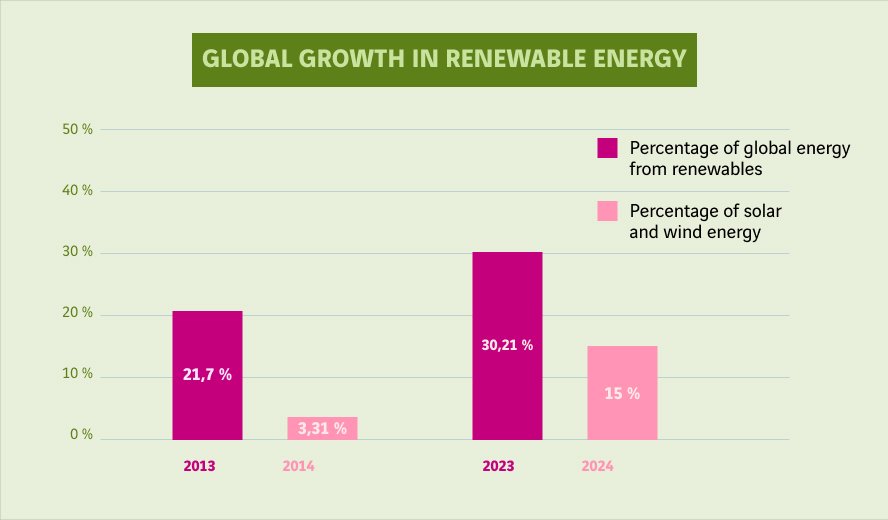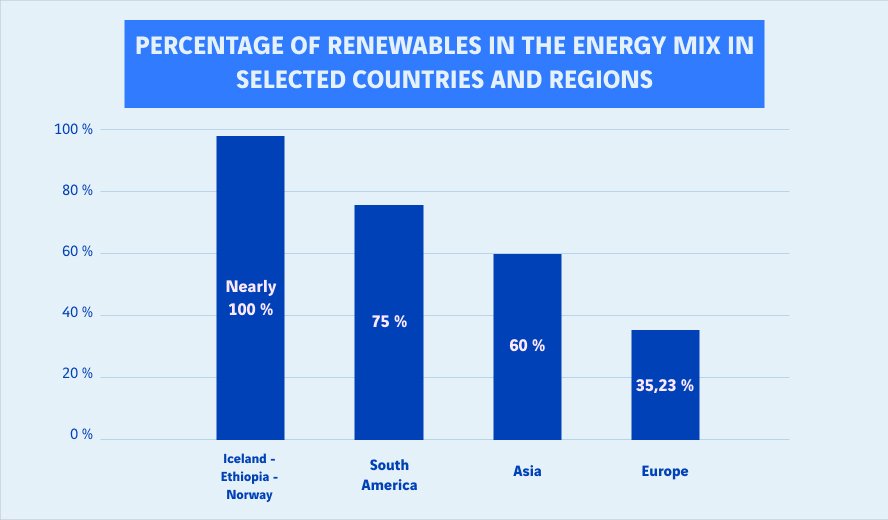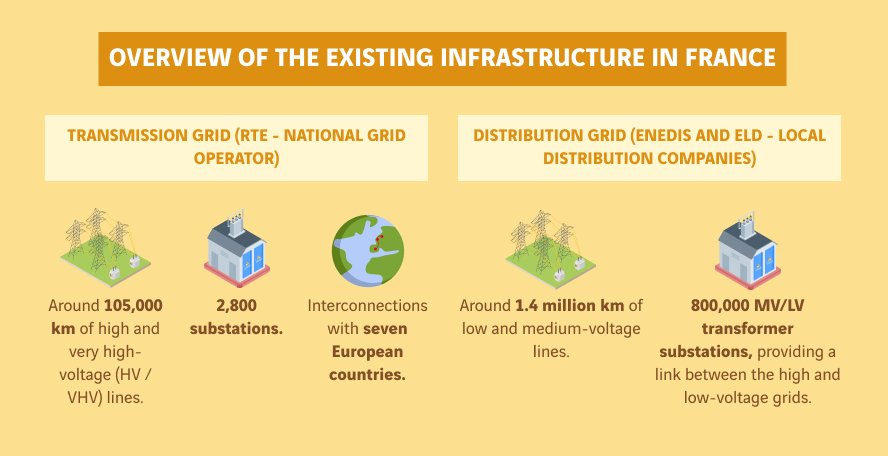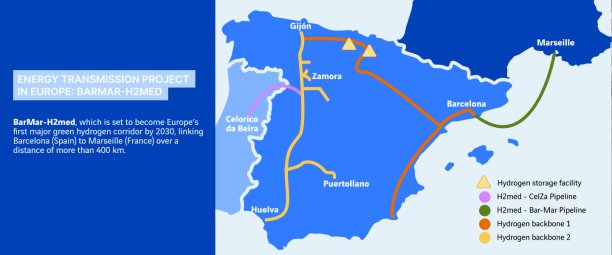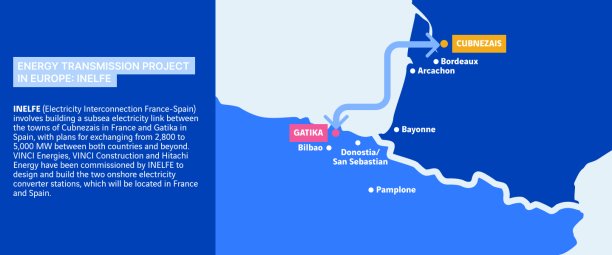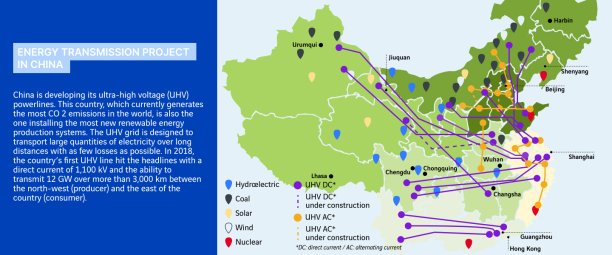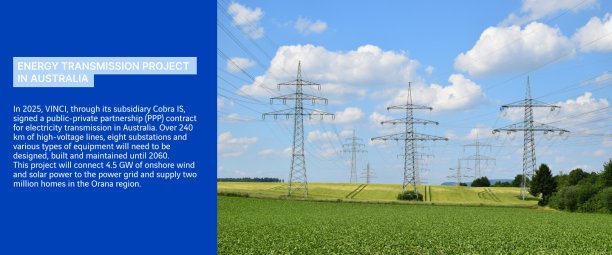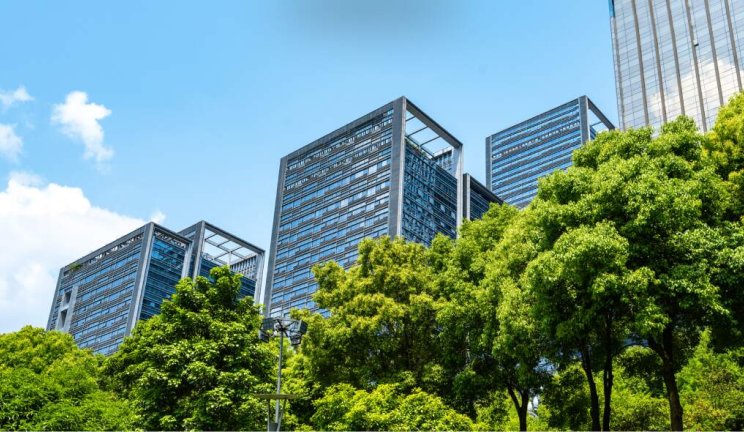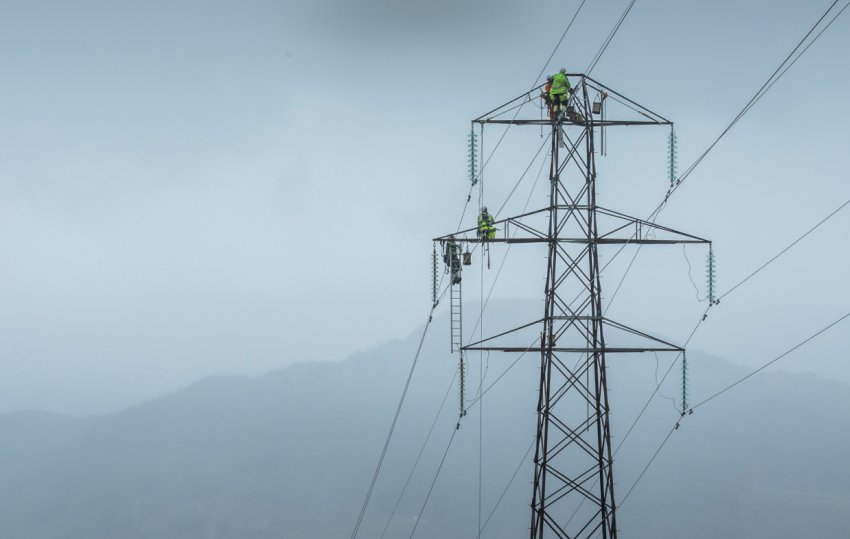
Renewable energy transmission: overcoming the grid challenge for a successful transition
Grids around the world are adapting to new ways of producing and consuming energy, as well as to global warming. When it comes to transporting green energy, renovation goes hand-in-hand with innovation.
Dans le même dossier
What happens afterwards? The lifecycle of renewable energy facilities
Storage: the cornerstone for developing renewable energy
For just over 10 years now, renewable energy (RE) production has been gaining traction in every region of the world, especially solar and wind power. A denser power distribution grid is required to support the growing number of energy sources.
A characteristic feature of solar and wind power is their intermittency. The energy produced varies according to the amount of sunshine or the strength of the wind, unlike more predictable energy sources, such as hydroelectric power.
Global grids need to adapt to these intermittent sources, which are harder to manage, since connecting and transporting new energies to their users is a prerequisite for their development.
A radically changing energy landscape
Although coal still tops the global list when it comes to the different sources of electricity, the proportion of the world’s energy from renewables is rising sharply. That figure jumped from 21.7% in 2013 to 30.24% in 2023. The surge in solar and wind power has played a major part in that increase, with their share in the energy mix climbing from 3.31% in 2013 to 15% in 2024. That was actually the first year when solar and wind power overtook hydroelectric power (14.3%) worldwide.
Some countries are already almost completely dependent on renewable energy, such as Iceland, Ethiopia and Norway, with hydroelectric power plants covering nearly all their electricity needs. South America is also well above the world average with renewable energy sources accounting for 75% of its energy mix, largely driven by hydroelectricity in Brazil. But these countries mainly rely on non-intermittent energy sources.
Renewable energy currently represents 35.23% of Europe’s energy mix in the wake of massive investments in wind and solar power. Growth is also particularly strong in Asia - 60% of all the new renewable electricity production infrastructure facilities built in 2023 were installed in this part of the world.
The rate at which new solar and wind power facilities are springing up is gaining momentum, and growth needs to accelerate further if global and national net zero targets are to be met.
In France, over 10 GW were installed between 2022 and 2024. The public distribution grid enjoyed a record-breaking year in 2024 with 240,000 new renewable energy production installations ready to be connected, i.e. 20% more than in 2023.
To address this situation, France’s national grid operator RTE is investing as part of its plans to transform and upgrade the existing network. New production zones are often far from areas with high energy needs. For example, offshore wind farms and large solar power plants are located in rural areas, meaning that they are nowhere near the major cities where demand tends to be concentrated. RTE’s investment plan provides for renewing and adapting the grid in response to climate change, supporting efforts to switch the country over to electricity, dealing with connection requests from new consumers and, finally, reinforcing its 400 kV lines, which represent the grid’s real backbone.
Distribution network operator Enedis has announced plans to invest €96 billion between 2022 and 2040 to ensure that the distribution grid is capable of accommodating the development of new decentralised production methods and the acceleration in electric mobility.
AC or HVDC: which technology for which applications?
Direct current (DC) and alternating current (AC) are both used for transmitting, distributing and consuming electricity.
AC is the type of current that enters our power sockets in Europe, Asia and Africa at a frequency of 50 Hz (60 Hz in North America). Meanwhile, DC is used in batteries, for example.
AC is suitable for long-distance transmission, but it tends to lose power, especially when used in underground or subsea lines. DC boasts fewer energy losses, particularly in subsea lines, underground links between countries, and high-power transmission lines between production sites and consumers. Some losses will obviously still happen when DC is converted to AC once the electricity has reached its destination. Therefore, careful calculations are required to determine the best technology to use, depending on the facility’s configuration.
HVDC (high-voltage direct current) lines are often ideal for the long-distance transmission of renewable energy. This is the case with offshore wind power. By building these high-voltage lines, green electricity can also be quickly transported over long distances with few losses, and the grid can be balanced, which is more variable due to the intermittent nature of the new energy sources.
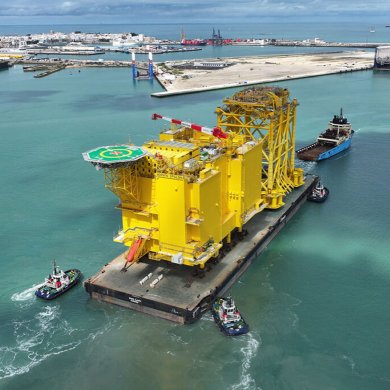
In the North Sea, VINCI subsidiary Cobra IS is working on three wind farm energy converter platforms. With a combined capacity of 6 GW, these facilities will convert the AC generated by the wind turbines into HVDC for transmission over a distance of 200 km to the coastal towns of Heide and Wilhelmshaven.
Cobra IS subsidiary Dragados Offshore, which is responsible for this mission alongside Siemens Energy, has been a world leader in this field since the 2000s. The company has a number of large-scale projects in offshore renewable energy to its credit, including the manufacture of a 900 MW energy converter platform connected to several wind farms in the North Sea between 2017 and 2021, followed by its installation in 2022 (DolWin6 project). Another prime example is the BorWinS project that was launched in 2020, which involves building an HVDC electricity converter platform that will supply over 1.1 million homes in Germany.
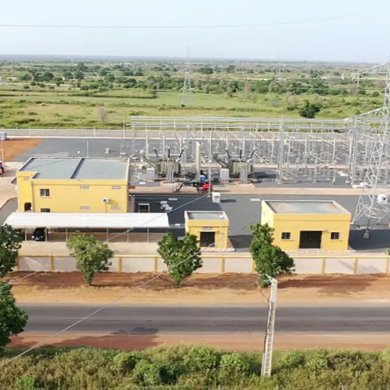
Closer look at... Africa’s first 100% digital high-voltage electrical station by Omexom
In Senegal in 2021, VINCI Energies subsidiary Omexom completed the first-ever 100% digital 225 kV high-voltage transformer station in Africa, alongside Senelec (the Senegalese national electricity company).
The contract also included the construction of a transmission grid with 200 km of very high-voltage lines, five transformer stations, and electrification networks for the Tambacounda, Thiès and Dakar regions.
What about storage? Innovations in the pipeline
Storage is an integral part of managing the power grid, and it plays a key role in managing energy flows more effectively and limiting losses during high production periods.
The development of green hydrogen could pave the way to storing renewable energy for longer periods than is presently possible... and transporting it easily. In Europe, dedicated hydrogene networks are currently taking shape.
Essential: grid security
Physically speaking, every power grid is potentially vulnerable. Climate-related hazards, such as storms, fires, heatwaves and extreme weather events, are striking with increasing frequency in an ever changing climate. Powerlines are especially at risk when they are located in isolated areas that are hard to monitor, without forgetting the physical or virtual dangers posed by deliberate attacks, with any country at risk of becoming a target. Therefore, cybersecurity should not be overlooked when designing facilities.
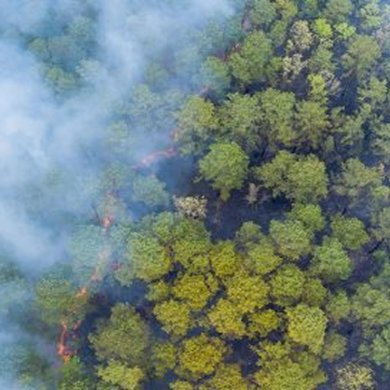
The VINCI Environment Awards shone the spotlight on a project that aims to protect high-voltage powerlines against wildfires in Portugal, which was implemented by VINCI Energies subsidiary Axians. This solution detects low-current variations in the grid that may herald a fire or flood.
Massive investments for electricity transmission
Grid operators need to invest heavily if they are to carry out the transformations required to adapt their grids to the consequences of climate change.
In France, for example, RTE has estimated that renewing the grid by 2040 will cost €24 billion, which will involve upgrading 23,500 km of overhead lines and 85,000 pylons, as well as telecommunications and grid control systems throughout the country. But RTE’s overall investment will be €100 billion over 15 years. Between 8,000 and 12,000 jobs could be created in the industry by 2030.
Sources :
VINCI - “Using green hydrogen as a driving force to decarbonise economies”. https://www.vinci.com/en/actions-and-missions/our-missions/accelerating-energy-transition/developing-renewable-energies/green-hydrogen
Geostock - “What is the Hystories Project?”. https://www.geostockgroup.com/en/hystories/
RTE - «Hydrogène vert: mythe ou réalité? ». https://www.rte-france.com/wiki-energie/hydrogene-vert-mythe-realite
Connaissance des énergies – « Quels sont les pays qui produisent le plus d’électricité renouvelable ? ». https://www.connaissancedesenergies.org/questions-et-reponses-energies/quels-sont-les-pays-qui-produisent-le-plus-delectricite-dorigine-renouvelable
RTE – « RTE présente les grandes orientations de sa stratégie de transformation du réseau de transport d’électricité à l’horizon 2040 ». https://www.rte-france.com/actualites/plan-strategique-developpement-reseau-transport-electricite-horizon-2040
Enedis – « 2024 : 5,5 GW d’énergies renouvelables et 5,1 GW de mobilité électrique ». https://www.enedis.fr/presse/2024-55-gw-denergies-renouvelables-et-51-gw-de-mobilite-electrique
RTE – « RTE présente les grandes orientations de sa stratégie de transformation du réseau de transport d’électricité à l’horizon 2040 ». https://www.rte-france.com/actualites/plan-strategique-developpement-reseau-transport-electricite-horizon-2040
Enedis – « 2024 : 5,5 GW d’énergies renouvelables et 5,1 GW de mobilité électrique ». https://www.enedis.fr/presse/2024-55-gw-denergies-renouvelables-et-51-gw-de-mobilite-electrique
The Agility Effect - “Data and AI-based warning system for forest fires and floods”. https://www.theagilityeffect.com/en/article/data-and-ai-based-warning-system-for-forest-fires-and-floods/
RTE – « RTE présente les grandes orientations de sa stratégie de transformation du réseau de transport d’électricité à l’horizon 2040 ». https://www.rte-france.com/actualites/plan-strategique-developpement-reseau-transport-electricite-horizon-2040
VINCI - “INELFE Biscay Gulf Project: New electrical interconnection between France and Spain”. https://www.vinci-energies.com/en/news/inelfe-biscay-gulf-project-new-electrical-interconnection-between-france-and-spain/
We Demain – « La Chine sous ultra-haute tension… pour sa plus grande satisfaction ». https://www.wedemain.fr/sauver-la-planete/tendances-de-demain/la-chine-sous-ultra-haute-tension-pour-sa-plus-grande-satisfaction-1124976
Subscribe
Stay tuned : receive our newsletter
Every quarter, discover new articles, exclusive features and experts' views delivered straight to your inbox.
Most viewed
Vous aimerez aussi
Marina Lévy - Companies at the heart of ocean conservation issues
Marina Lévy, oceanographer, research director at the CNRS and ocean advisor to the president of the French National Research…
Building with and for nature
Whether creating barrages, stripping away topsoil, cutting down trees or digging channels, humans have spent thousands of…
Bridging the construction gender gap: paving the way to a career in industry for women in Colombia
In 2025, the Ruta 40 consortium led by VINCI Construction Grands Projets completed work on widening and upgrading the Bogotá…
